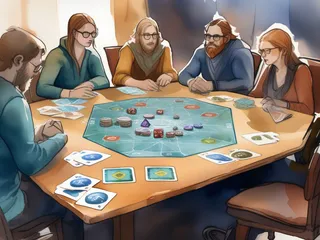As a Scrum Master with years of experience facilitating retrospectives for development teams, I've discovered that the success of a retro hinges on thoughtful preparation. The right format, the right questions, and the right energy can transform a session from a routine meeting into a powerful tool for team growth and improvement.
In this post, I'll share the key questions I ask myself when planning a sprint retrospective that delivers real value and fosters meaningful change.
Understanding the Team's Needs
1. What does the team want to focus on?
Retrospectives should always serve the team first. Before deciding on a format or structure, I reach out to the team with a simple question: "Is there anything specific you'd like to cover in our upcoming retro?"
The responses often surprise me. For instance, during a challenging sprint where we missed several delivery targets, I assumed the team would want to discuss process improvements. Instead, they wanted to celebrate small wins to boost morale. Listening to these signals ensures the retro addresses the team's actual needs rather than solving the wrong problem.
2. Are there known issues that need attention?
Sometimes, there's an obvious issue that demands focus. Whether it's growing tension between team members or a recurring bottleneck in the deployment pipeline, addressing these "elephants in the room" can lead to significant improvements.
For example, when our bug backlog started growing sprint after sprint, we dedicated a retrospective to quality practices. Using the "Five Whys" technique, we identified root causes and implemented changes to our code review process, which had a lasting positive impact.
If you're looking for more specific guidance on facilitating retrospectives once you've planned them, check out my guide on Energizing Your Sprint Retrospectives, which covers the actual execution and engagement techniques.
Gauging Energy and Context
3. What is the team's current energy level?
Teams are made up of people, not machines. A complex retrospective format might be ideal in theory but disastrous if scheduled at 4 PM on a Friday after a high-pressure release.
I learned this the hard way when I planned an elaborate exercise the day after a production incident that kept half the team up until 2 AM. Participation was minimal, to say the least. Now, I always consider the team's energy levels and adjust the format accordingly. Sometimes, a shorter, focused session is more effective than an exhaustive one.
4. Are we considering long-term trends?
Retrospectives often fall into the trap of recency bias, focusing only on the last sprint. To counter this, I periodically prepare data visualizations that highlight trends over the past 3-6 months, such as:
- Velocity trends
- Bug counts by category
- Lead time for features
- Deployment frequency
- Customer satisfaction scores
Taking a step back to look at the bigger picture can reveal patterns that aren't immediately obvious.
5. When was our last retrospective?
The frequency of retrospectives influences their structure. For teams that haven't held a retro in months, I allocate more time for discussion, use broader reflection formats, and ensure clear documentation of action items. This approach helps capture pent-up feedback and sets the stage for productive future sessions.
6. What timeframe are we reflecting on?
The scope of the retrospective should align with its purpose. Are we reviewing a single sprint, a release cycle, or a specific incident? For longer timeframes, timeline-based exercises work well, while focused formats like "What went well/What needs improvement/What still puzzles us" are better for shorter periods.
Selecting the Right Format
7. Which format best supports our goals?
The format should always serve the retrospective's primary objective. Here are some formats I frequently use:
| Goal | Retrospective Format |
|---|---|
| Boost morale | Appreciation Circle or Kudos Wall |
| Address conflict | Sailboat Retro (winds/anchors) |
| Generate ideas | Brainwriting or 1-2-4-All |
| Identify bottlenecks | Value Stream Mapping |
| Explore complexity | LEGO Serious Play |
| Build cohesion | Team Radar or Health Check |
Remember, simplicity often trumps novelty. Choose a format that aligns with your goals rather than opting for complexity for its own sake.
Considering Team Dynamics
8. How mature is the team?
Team maturity significantly impacts retrospective design. For newer teams, I prioritize psychological safety and structured formats like "Start/Stop/Continue." As trust builds, we can explore more challenging exercises that delve deeper into team dynamics.
9. What are the team dynamics?
Understanding team dynamics is crucial. For example:
- Teams with dominant voices benefit from formats that ensure equal participation, like writing ideas on sticky notes before discussion.
- Teams avoiding conflict might need anonymous input methods.
- Teams with power imbalances require careful facilitation to ensure everyone feels safe sharing.
- Remote or hybrid teams need digital-friendly formats with clear participation mechanisms.
For teams with neurodivergent members, I highly recommend reading The Neurodivergent Developer's Guide to Agile Ceremonies, which offers specific strategies for creating more accessible and inclusive retrospectives.
I once underestimated cultural differences in a multinational team, leading to misunderstandings. Now, I always consider cultural context when planning.
10. Are there unresolved issues from previous retrospectives?
Continuity is key. Before planning a new retrospective, I review the outcomes of previous ones:
- Were action items implemented?
- Have we seen improvements in focus areas?
- Are there unresolved discussions?
- Has new information emerged that changes our conclusions?
Following through on commitments builds trust and ensures retrospectives drive real change.
Bringing It All Together
Planning effective retrospectives is both a science and an art. By asking the right questions and tailoring the format to the team's needs, you can create sessions that inspire meaningful improvement.
Remember, the true measure of a retrospective's success isn't how it feels in the moment—it's the positive changes it brings to the team's collaboration and performance. A great retro leaves the team energized and empowered to own their improvements.
As you develop your retrospective facilitation skills, consider how they fit into the broader evolution of Scrum Master responsibilities. If you're interested in where the role is heading, check out The Evolution of Scrum Masters: From Ceremony Runners to Strategic Enablers.





